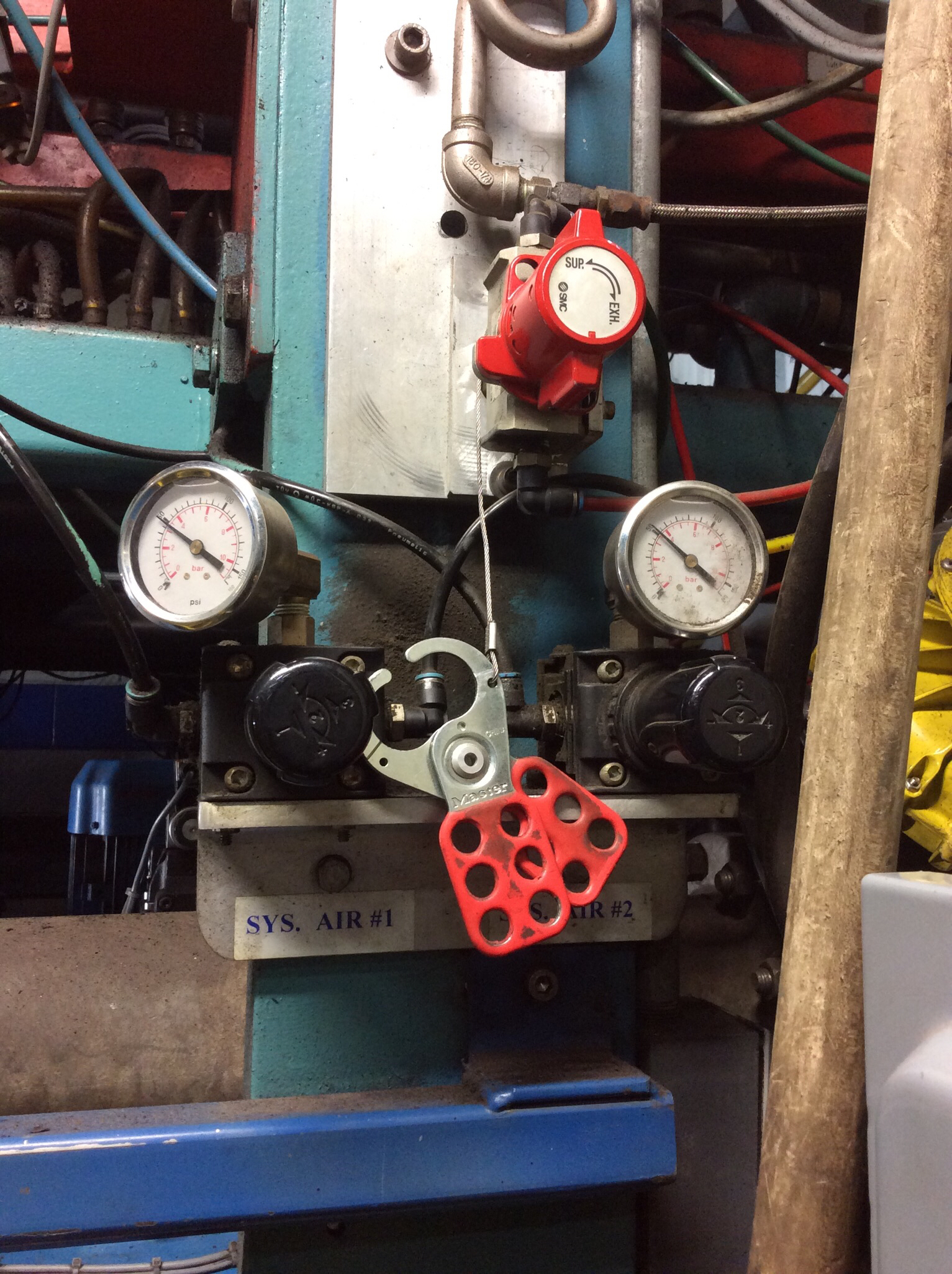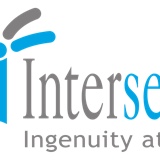Information
Audit Process- Welding (Supply Chain).
-
Document No.
-
Audit Title
-
Client / Site
-
Conducted on
-
Prepared by
-
Comments/ Recommendations:
Supplier Information and Review.
-
Company Name
-
Add location
-
When was the Company Established.
-
What is the the Business Characterization.
-
What is the Size of the Facility?.
-
Shift Length (hrs).
-
Are there any QA/QC Personnel on Staff
-
Is there a Certified Weld Inspector on Site?.
-
Is DCMA on Site?.
-
Is there ASNT Level I/II/III NDT Inspectors.
-
Are there any NAS- 410 NDT Inspectors on Staff?.
-
Does the Company Employ and Document any NDT Methods
-
Does the Company have Certified Welders on Staff
-
Does the Company have any Weld Supervisor's on Staff.
-
Does the Company have any Weld Engineers on Staff.
-
Does the Company have any MFG Engineers on Staff.
-
Does the Supplier presently do work for the Client?.
-
Quality Systems Approvals
-
Is there Separation in Reporting Duties for personnel responsible for Quality.
-
Does the Quality Control Inspector have the Authority to "Stop Work", the responsibility to Identify Quality Problems and Provide Recommendations.
-
Is there Objective Evidence of a Review Process of Certified Material Test Reports (CMTR) to ASTM Specifications. Note: If CMTR are not required to be kept of file per Contract Documents. the fabricator shall still show the capability of Reviewing the Reports.
-
Are materials identified and traceable as specified in the Technical Data Package (TDP). (Quality Program Receiving and Manufacturing Operations).
-
Do Purchase Orders for filler material specify the American Welding Society (AWS) Classification and Specification?.
-
Comments/ Recommendations:
Reference Library- All Reference Material Shall be to the Latest Published Version or Revision.
-
Does the Supplier have the Document "Aluminum Design Manual" from the Aluminum Association on File.
-
AMS-STD- 1595 (Qualification of Aircraft, Missile & Aerospace Fusion Welders) on File.
-
ANSI Z49.1 (Safety in Welding, Cutting and Allied Processes)
-
ASME Boiler and Pressure Vessel Code, Section V: Nondestructive Examination.
-
ASTM E 1444 (Standard Practice for Magnetic Particle Testing)
-
ASTM E1417 (Standard Practice for Liquid Penetrant Testing)
-
ASTM E1742 (Standard Practice for Radiographic Examination)
-
ASTM E164 (Standard Practice for Liquid UltrasonicTesting)
-
ASTM E1648 (Standard Reference Radiographs for Examination of Aluminum Fusion Welds)
-
AWS B1.11 (Guide for the Visual Examination of Welds)
-
AWS A3.0 (Standard Welding terms and Definitions)
-
AWS B2.1 ( Specification for Welding Procedure and Performance Qualification).
-
AWS B4.0 (Standard Methods for Mechanical Testing of Welds)
-
AWS D1.1 (Structural Welding Code- Steel)
-
AWS D1.2 (Structural Welding Code- Aluminum)
-
AWS D1.3 (Structural Welding Code- Sheet Steel)
-
AWS D1.6 (Structural Welding Code- Stainless Steel)
-
AWS D1.9 (Structural Welding Code- Titanium)
-
AWS D9.1 (Sheet Metal Welding Code)
-
AWS D17.1 (Specification for Fusion Welding for Aerospace Application)
-
AWS D17.2 (Specification for Resistance Welding for Aerospace Application)
-
AWS A2.4 (Standard Symbols for Welding, Brazing and Nondestructive Examination)
-
MIL-STD-2219 (Fusion Welding for Aerospace Application)
-
MIL-STD-271 (Requirements for Nondestructive Testing Methods)
-
MIL-STD-2035 (Nondestructive Testing Acceptance Criteria)
-
MIL-W-6858 (Welding, Resistance: Spot and Seam)
-
NADCAP welding documents (e.g., SAE AS 7110, NADCAP Requirements for Welding/Brazing)
-
NADCAP NDT Inspection Documents
-
NAVSEA Welding Standard 250-1500-1
-
NAVSEA Technical Publication S9074-AQ-GIB-010/248
-
NAVSEA Technical Publication S9074-AR-GIB-010/278
-
NAS-410 (Certification & Qualification of Nondestructive Test Personnel)
-
WS 33739 (Raytheon Process Specification for Aerospace Fusion Welding)
Certifications to:
-
Visual Inspection (VT)
-
Radiographic Inspection (RT)
-
Ultrasonic Inspection (UT)
-
Magnetic Particle (MT)
-
Dye Penetrant Inspection (PT)
Qualifications to:
-
ASTM E164
-
ASTM E1417
-
ASTM E1444
-
ASTM E1742
-
AWS QC1
Health and Safety
-
Is there an EH&S (Environmental Health & Safety) Officer or an Industrial Hygienist on Site?.
-
Is there objective evidence of a Welding Safety Program?
-
Is there objective evidence of Safety Training classes being conducted.
-
Is the facility environmentally controlled (i.e., fully heated and/ or air conditioned)
-
Is the relative humidity monitored and documented within the facility or the Welding Environment
-
Does the facility have a welding gas distribution system?.
-
Are the Oxygen levels Monitored?.
-
Is there a facility Equipment List/ Capabilities Profile sheet available?.
-
Does the facility have lifting crane capacity within the welding area?
-
What type of lifting crane?.
-
Does the facility employ welding positioners.
-
Is there a designated area for weld and/or Base Material grinding?.
-
Is the Welding / Fabrication Area Safe, Clean and Orderly.
-
Are there Welding Fume Extractors
-
Are Pre and Post Weld heat treatments (PWHT) performed at the Facility
-
Are there Separate Work Areas for Stainless Steel, Titanium, CArbon Steel or Aluminum
-
Is Blast cleaning performed at the Facility
-
Is Base material or Weld metal Analyzed
-
Laboratory Info.
-
Does the organization perform leak testing
-
What Type of Process?.
-
Is there objective evidence of weld operator annual vision test
-
Is there objective evidence of weld inspector's annual vision test
-
Comments/ Recommendations
Quality Control- Documentation
-
Does the Organization have a Quality and Procedures Manual
-
Are Sub-Tier Suppliers Qualified by a documented evaluation?.
-
Do purchase orders for base material (Nuts, washers, Bolts, Bar Stock etc specify the Grade?.
-
Is the base material currently being used on the shop floor traceable to a Certified Mill Test Report (CMTR)
-
Do purchase orders for filler material specify the American Welding Society (AWS) classification and specification.
-
Is the filler material currently being used on the shop floor traceable to a Certified Mill Test Report (CMTR)
-
Do purchase orders for Paint specify it's Requirements
-
Is the paint currently being used on the shop floor traceable to a Test Report (CMTR)
-
Have controls been established to monitor the receipt of incoming Material.
-
Is a quality control program in effect to allow management to assess whether work is being performed according to specification?.
-
Is there objective evidence of correction of non-conforming material or work in process
-
Are weldments traceable to a Qualified or Certified Welder
-
Is the objective evidence that a welder/ weld operator has worked with a particulate process, material type and weld joint geometry within the last 6 months
-
Is there a formal Material Review Board (MRB) process established to disposition weld defects?.
-
Is there objective evidence to assure that welds are not obstructed by subsequent operations and are inspected prior to being covered up (e.g. witness/ inspection hold points on traveller).
-
Are Requests for Information (RFI's) necessary to resolve discrepancies and variations from contract requirements documented?.
-
Is there a procedure for processing revised or voided drawings
Quality Control- Welding Consumables
-
Are sub-merged arc welding (SAW) fluxes and filler wire properly identified?.
-
Is the Filler wire and Flux stored in a secure, clean and dry environment?,
-
Are Flux and Filler materials stored per manufactures recommendations?.
-
Are there established procedures for the proper storage and control of low hydrogen Shielded Metal Arc Welding (SMAW) electrodes.
-
When Low hydrogen filler metal is used from an Oven is the environment with in the storage oven measured?.
-
Are welding filler metal traceable to a Certified Mill Test Report (CMTR)
-
Are the welding consumables Heat No. And Lot No. documented on the Traveler/ Router (If required by the contract specifications)
-
Do the Welding Consumables meet the Contract Specifications?.
-
Is weld filler wire distribution Controlled?.
-
Are used weld filler wire disposed of After welding activities (e.g. Stub-end Box),
-
Is the welding filler wire sent to an independent Material's Lab for Testing and P.O. verification prior to being employed.
-
If the Organization mixes their own shielding gases are Calibrated Mixture Chambers used?.
Procedure Qualification Records (PQR's) and Welding Procedure Specifications (WPS's) are qualified in accordance with what Code:
-
AWS B2.1
-
AWS D1.1
-
AWS D1.2
-
AWS D1.3
-
AWS D1.6
-
AWS D9.1
-
AWS D17.1
-
AWS D17.2
-
ASME IX
-
NAVSEA
-
MIL-W-6858
What position(s) are Welders qualified in:
-
Groove Welds:
-
1G
-
2G
-
3G
-
4G
-
5G
-
6G
-
6GR
-
Fillet Welds:
-
1F
-
2F
-
3F
-
4F
-
5F
-
6F
-
Has the Organization engaged in DOD/ Military (MIL-STD) welding activities prior to this audit?.
Quality Control- Welding Operations
-
Does the Organization utilize Weld Chambers?.
-
Are O2 Analyzers Installed?.
-
Are O2 Levels verified within a purge gas/ Weldment environment?.
-
Are Pre-Weld, Inter-pass and Post-Weld Cleaning Requirements defined to the Welding Procedure Specification (WPS)
-
Is there objective evidence that surface condition and cleanliness of the weld joint fraying surfaces and filler metal has been examined prior to welding?.
-
Are Preheat, Inter-pass and Post-Weld heat treatment addressed on the Welding Procedure Specification (WPS)
-
Surface contacting Pyrometer
-
Temperature Crayons
-
Liquid
-
Pellets
-
Stickers
-
IR heat sensor
-
For automatic/ mechanized welding (as defined in AWS A3.0), are the weld settings used in production within range of those documented on the WPS or PQR?.
-
Is there an established Calibration Program for the calibration of Welding Supplies, Panel Ammeters, Panel Voltmeters, Wire Feeders, Positioners etc.
-
For semi-automatic welding (as defined in AWS A3.0), are the weld settings used in production within range of those documented on the WPS or PQR?.
-
Is there an established Calibration Program for the calibration of Welding Supplies, Panel Ammeters, Panel Voltmeters, Wire Feeders, Positioners etc.
Quality Control- Weld Inspection.
-
Are weld inspectors qualified and knowledgeable with the Specifications, which apply to the Fabricators work
-
Are written welding procedures in close proximity to and used by the Welders
-
Are tools or aids used for visual weld inspection.
-
Fillet Weld Gage's
-
Borescopes
-
Fiberscopes
-
Videoscopes
-
Are there Hold Points at the facility strictly devoted to weld inspection?.
-
Is there objective evidence of Visual (VT) weld inspection being performed Before, During and After additional Stress inducing Operations (e.g. straightening or heat-treating)
-
Is there a formal Material Review Board (MRB) established for disposition of non-conforming weldments.











